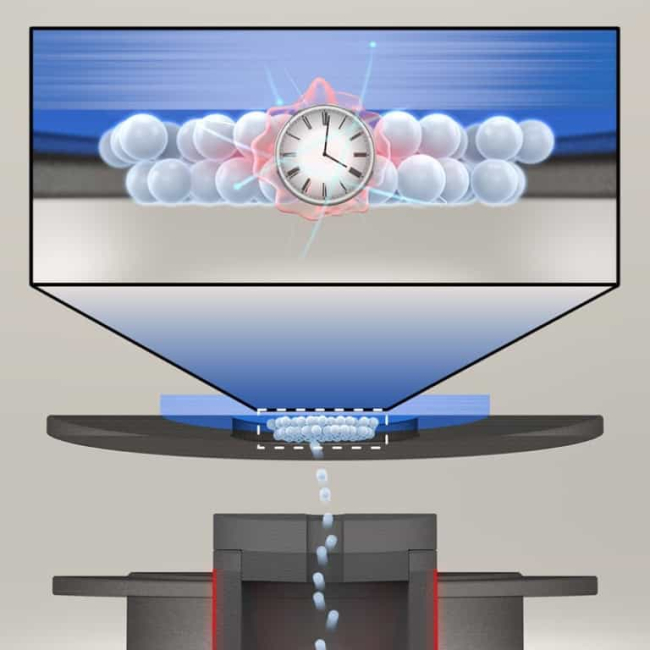229ThF4 thin films for solid-state nuclear clocks
| Author | |
|---|---|
| Abstract |
After nearly 50 years of searching, the vacuum ultraviolet 229Th nuclear isomeric transition has recently been directly laser excited1,2 and measured with high spectroscopic precision3. Nuclear clocks based on this transition are expected to be more robust4,5 than and may outperform6,7 current optical atomic clocks. These clocks also promise sensitive tests for new physics beyond the standard model5,8–12. |
| Year of Publication |
2024
|
| Date Published |
2024/12/01
|
| Journal Title |
Nature
|
| Volume |
636
|
| Issue |
8043
|
| Start Page or Article ID |
603-608
|
| ISBN Number |
1476-4687
|
| DOI | |
| URL | |
| Download citation | |
| JILA PI | |
| Related Publications | |
| Related JILA Highlights | |
| Associated Institutes | |
Journal Article
|
|
| JILA Topics | |
| Publication Status | |
| Publication Image |

|


 The Physics Frontiers Centers (PFC) program supports university-based centers and institutes where the collective efforts of a larger group of individuals can enable transformational advances in the most promising research areas. The program is designed to foster major breakthroughs at the intellectual frontiers of physics by providing needed resources such as combinations of talents, skills, disciplines, and/or specialized infrastructure, not usually available to individual investigators or small groups, in an environment in which the collective efforts of the larger group can be shown to be seminal to promoting significant progress in the science and the education of students. PFCs also include creative, substantive activities aimed at enhancing education, broadening participation of traditionally underrepresented groups, and outreach to the scientific community and general public.
The Physics Frontiers Centers (PFC) program supports university-based centers and institutes where the collective efforts of a larger group of individuals can enable transformational advances in the most promising research areas. The program is designed to foster major breakthroughs at the intellectual frontiers of physics by providing needed resources such as combinations of talents, skills, disciplines, and/or specialized infrastructure, not usually available to individual investigators or small groups, in an environment in which the collective efforts of the larger group can be shown to be seminal to promoting significant progress in the science and the education of students. PFCs also include creative, substantive activities aimed at enhancing education, broadening participation of traditionally underrepresented groups, and outreach to the scientific community and general public.